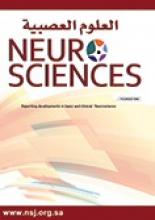Abstract
Meningococcal disease occurs as both endemic and epidemic disease in most parts of the world with significant morbidity and mortality. Among the different serogroups of Neisseria meningitidis, serogroups A, B, C account for 90% of the disease. In the last few years there has been a change in the epidemiology of the disease with an increase in the prevalence of serogroup C in Europe and North America, serogroup Y in the United States of America and Sweden, and W135 in the Kingdom of Saudi Arabia. The emergence of Neisseria meningitidis serogroup W135 in the Kingdom of Saudi Arabia has lead to 2 major outbreaks mainly among Pilgrims during the Hajj season of 2000 and 2001. This has lead the health officials in the Kingdom of Saudi Arabia to change their vaccine requirements for the Umra and Hajj to include the quadrivalent meningococcal vaccine (A, C, Y, W135) instead of the bivalent one (A, C). Despite all the advances in prevention, diagnosis and treatment, the disease continues to have high mortality (5-10%). Prompt empirical treatment for suspected cases should include penicillin or a 3rd generation cephalosporin. A new conjugate vaccine against Neisseria meningitidis serogroup C has been recently licensed, while quadrivalent conjugate vaccine against serogroup A, C, Y and W135 is in early development. Meanwhile targeted vaccination with the available vaccines according to the epidemiology of the disease and rapid chemoprophylaxis for the close contacts of active cases are the most effective preventive strategies.
- Copyright: © Neurosciences
Neurosciences is an Open Access journal and articles published are distributed under the terms of the Creative Commons Attribution-NonCommercial License (CC BY-NC). Readers may copy, distribute, and display the work for non-commercial purposes with the proper citation of the original work.






